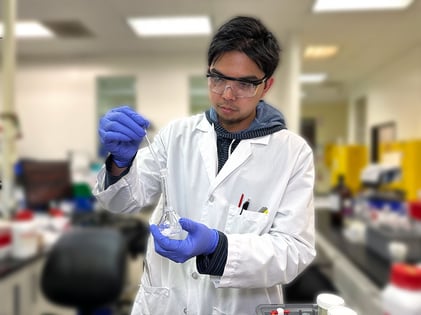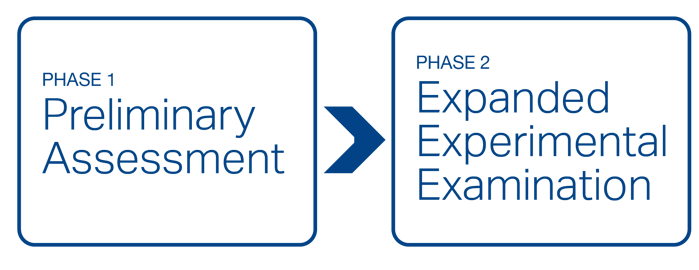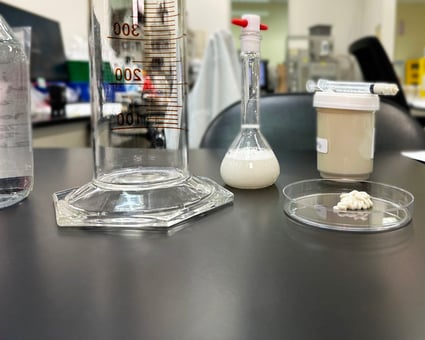Reviewed and Approved by Dean Cirotta, President - EAS Consulting Group & Executive Director of Regulatory Affairs - Certified Group
1-Minute Summary
- cGMPs require a thorough OOS investigation if your in-house or third-party lab produces an out-of-specification result.
- Laboratory investigations involve assessing OOS, out-of-trend (OOT), and unusual results through a two-phase approach for accurate results.
- Phase I includes accuracy assessments and historical reviews to identify potential laboratory errors and evaluate past data.
- Phase II encompasses expanded experimental examinations with additional sampling and diverse testing methods.
- Documentation and quality management play crucial roles, ensuring thorough recording and oversight of the entire out-of-specification investigation process.
Complying with cGMPs and FDA Regulations
Following current Good Manufacturing Practices (cGMPs) in U.S. Food and Drug Administration (FDA) regulations is not just a legal obligation, it’s a cornerstone of product integrity and consumer trust.
Whether you manufacture dietary supplements or OTC drug products, cGMPs require you to establish specifications for your components (raw materials), in-process, and finished products:
- 21 CFR 111 for dietary supplements.
- 21 CFR 211 for OTC drug products.
So, what happens when you receive an out-of-specification (OOS) result either from your in-house lab or a third-party lab? An OOS result triggers an out-of-specification investigation, as mandated by cGMPs:
- 21 CFR 111.113 for dietary supplements.
- 21 CFR 211.192 for OTC drugs that contain active pharmaceutical ingredients (APIs).
In this article, we explain how to perform an OOS investigation. The guidelines, which are based on the FDA’s Guidance for Industry: Investigating Out-of-Specification (OOS) Test Results for Pharmaceutical Production, apply to dietary supplements and OTC drug products.

Understanding the OOS Investigation Process
Defining “Out of Specification”
An out-of-specification (OOS) result is a pivotal moment in the manufacturing process. An OOS result occurs when a test outcome for a raw material, in-process material, or finished product falls outside the pre-defined acceptance criteria.
These criteria are essential in ensuring the product's identity, purity, strength, and composition, alongside setting limits for possible contaminants. The discovery of an OOS result sets in motion a detailed investigative process.
The Two-Step OOS Investigation Process Explained
An OOS investigation is typically bifurcated into two distinct yet interconnected stages:
- Laboratory OOS Investigation: This initial phase aims to verify the validity of the OOS result. It involves a thorough examination to determine if the result was due to laboratory error or an inherent issue with the sample.
- Material Review: Should the OOS result be validated, the process moves to the material review. This step involves a broader investigation into the non-conforming material or product, assessing whether the issue is isolated or indicative of a more widespread problem.
This two-step process aids in identifying the root cause and ensures the necessary corrective actions are taken to prevent recurrence.

Laboratory OOS Investigations
The Importance of Assessing OOS, OOT, and Unusual Results
It's not just OOS results that warrant attention. Out-of-Trend (OOT) and unusual results also play a significant role in ensuring product consistency and safety.
- OOT results: Those not aligning with established patterns or trends.
- Unusual results: Atypical or unexpected findings that may not necessarily be OOS but still require investigation.
The Dual-Phase Approach to a Laboratory Out-of-Specification Investigation
OOS investigations in a laboratory setting are methodically divided into two key phases, each with specific objectives and procedures:
Phase I - Preliminary Assessment:
- Documentary Review: This involves examining the test procedures, methodologies, and data accuracy. It's a non-experimental review aiming to identify any potential laboratory errors that could have led to the OOS result.
- Experimental Examination: If the documentary review does not reveal any errors, the investigation moves to properly re-analyzing or re-testing the sample. This step is crucial in verifying the integrity of the original test result.
Phase II - Expanded Experimental Examination:
If Phase I concludes with no significant findings, Phase II involves a more comprehensive experimental examination. This might include additional sample testing, using different methodologies, or testing under varied conditions to uncover any hidden discrepancies or errors.
This structured approach ensures that every possible cause for an OOS result is thoroughly investigated. It is especially vital for contract laboratories, which play a significant role in the dietary supplement and OTC drug industries, to adopt such a meticulous process.
Phase I of a Laboratory OOS Investigation
Let’s take a closer look at Phase 1 of an OOS investigation, which begins with an accuracy assessment and historical review.
Accuracy Assessment
This non-experimental process involves a re-examination of the solutions, methodology, and instrumentation used in the original test. It's conducted by both the analyst and supervisor to pinpoint any laboratory errors that might have led to the OOS, OOT, or unusual results.
If errors are identified, they invalidate the original test result, potentially negating the need for further material review.
Historical Review
Alongside the accuracy assessment, a historical review is conducted.
This review is not explicitly mentioned in the FDA guidance but is widely recognized as beneficial. It encompasses an analysis of previous test results, investigations, and relevant material or product certificates of analysis (COAs) and specifications. This step helps identify any patterns or recurring issues that might have contributed to the current OOS result.
Experimental Confirmation by Re-Analysis
If the accuracy assessment and historical review yield no definitive errors, the next step is re-analysis.
This involves re-introducing the final sample or diluent into the test system, ideally using the same preparations and reagents as the original test. To ensure reliability, re-injections are performed in replicates of three to establish a mean and standard deviation. This step helps assess any transient equipment malfunctions.
Key Considerations for Re-Analysis:
- Use the same standards, reagents, and chemical preparations as the original analysis.
- Avoid re-analyzing unstable or expired samples and preparations.
- Do not modify standard or method dilutions as it introduces additional variables.
Re-Test Procedures
Re-testing becomes necessary if no significant errors are identified during the documentary reviews or equipment assessment. It involves re-testing the original sample, ideally by both the first analyst and a second, more experienced analyst.
This process provides additional data for a condensed accuracy, precision, and ruggedness assessment of the test method. Replicates of three from each analyst are required for a comprehensive data set.
This phase of investigation is crucial in establishing the validity of the original OOS result and must always consider the expected method variability. Pre-defined criteria for standard deviation and percent difference assessment based on test method validation may also be applied.

Phase II of a Laboratory OOS Investigation
Undertaking an Expanded Experimental Examination
When Phase I of the laboratory OOS investigation concludes without significant findings or a definitive cause for the OOS, OOT, or unusual result, Phase II comes into play. This phase involves an expanded experimental examination, delving deeper into potential causes and variances that might not have been apparent in the initial analysis.
Key Steps in Phase II:
- Collecting Additional Samples: This may involve testing additional samples or using different test methodologies. It's essential to explore variations in methods or include additional quality control samples to comprehensively assess the issue.
- Re-Sampling Strategy: Re-sampling using the same techniques and locations as the initial process can help identify errors or contamination concerns during the original sampling. Enhanced representative and statistical sampling, such as random sampling of additional containers, may also be beneficial.
- Tail Sampling of Large Containers: For bulk materials, it might be necessary to sample from various sections (top, middle, bottom) using a thief sample device to ensure a thorough and representative analysis.
Management Approval and Oversight
All actions and testing procedures in Phase II must be well-defined, reviewed, and approved by quality unit management before execution. This step is crucial to maintain the integrity of the investigation and ensure adherence to established protocols.
This expanded experimental examination is vital in uncovering the root cause of the OOS result, particularly when the initial out-of-specification investigation does not yield conclusive findings. It ensures a comprehensive approach to quality control and compliance with regulatory standards.
Documentation and Quality Management
In the highly regulated world of dietary supplements and OTC drugs, documentation is not just a formality but a fundamental aspect of compliance and quality assurance. The adage, "If it's not documented, it didn't happen" holds true in every facet of cGMPs, and this is especially pertinent in the case of an OOS investigation.
Key Aspects of Documentation in OOS Investigations:
- Unique Identification: Each OOS investigation must be assigned a distinct alphanumeric identifier. This ensures that each case is tracked and managed uniquely, facilitating easier retrieval and review.
- Comprehensive Recording: Every step of the investigation, from the initial finding of the OOS result to the final conclusions and actions taken, must be meticulously documented. This includes recording all tests performed, observations made, and decisions reached.
- Formalization: The documentation should be done on standardized forms or within established systems, ensuring consistency and reliability of the recorded information.
Role of Quality Management
Quality unit management plays a pivotal role in overseeing OOS investigations. Their responsibilities include:
- Review and Approval: All OOS investigations must be reviewed and approved by quality unit management. This oversight ensures that the investigation adheres to established procedures and regulatory requirements.
- Compilation and Tracking: Management is responsible for compiling and tracking all OOS investigations. This activity is crucial for monitoring, trending, and identifying any systemic issues within the manufacturing process.
The robust documentation and active involvement of quality management in OOS investigations underscore the industry's commitment to maintaining high standards of product quality and consumer safety. It also ensures that any actions taken in response to OOS results are well-informed, justified, and in compliance with regulatory expectations.
Upholding Standards: The Final Word on OOS Investigations
The handling of out-of-specification (OOS) results demonstrates a company's commitment to quality and regulatory adherence. It is important to remember that all data, including the original failing data, must be retained and taken into account by Quality when making a final OOS product disposition decision.
Remember that the goal of an OOS investigation is not just to comply with regulatory norms but to ensure that the products reaching consumers are of the highest quality and safety. Diligent OOS investigations are a cornerstone in building and maintaining trust in the dietary supplement industry.
